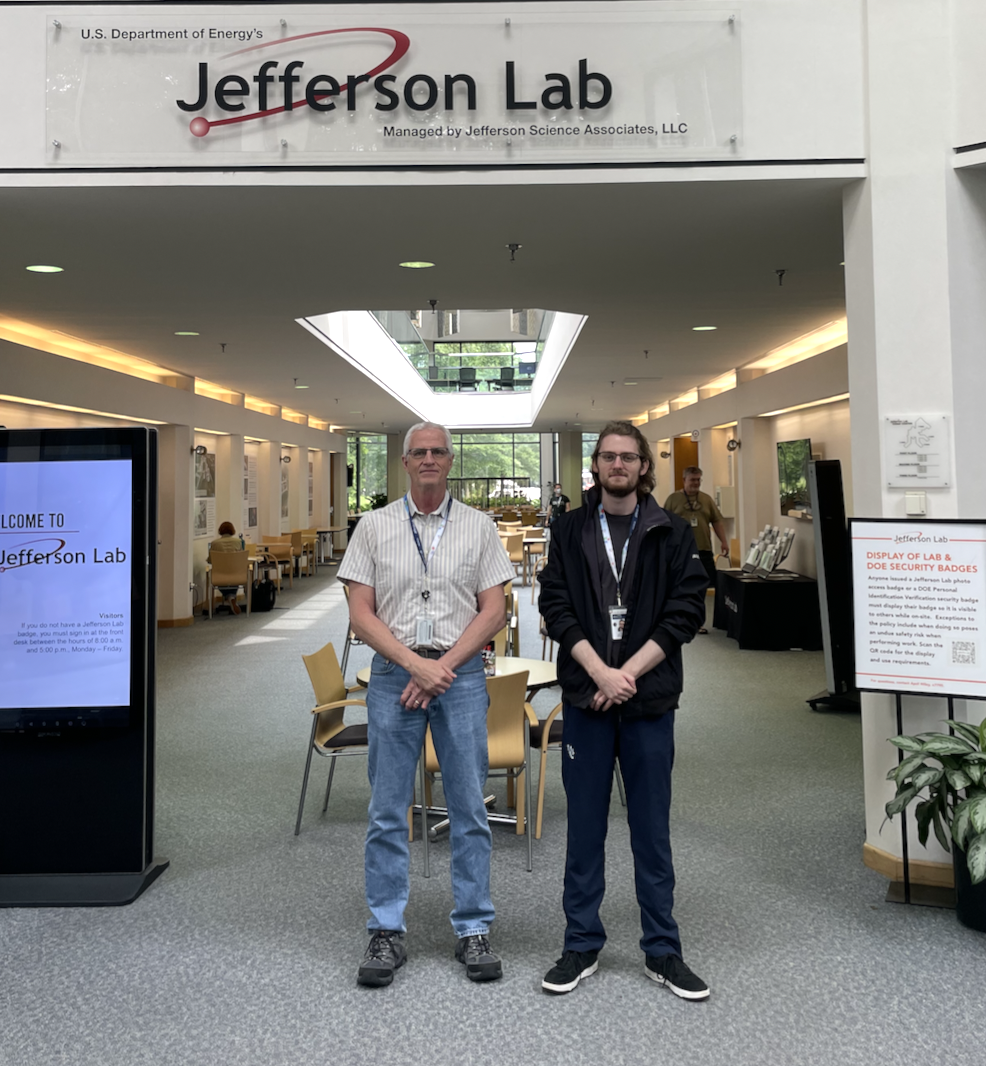I have just completed a trip to Jefferson Laboratory in Virginia, USA. I came because we have a University of Surrey Physics student on placement at the lab as part of his Research Year, and I was visiting him. All Surrey MPhys students on Physics programmes (“Physics” and “Physics with …”) have a compulsory Research Year starting mid-way through their third year of study until mid-way through their fourth and final year.
The student in question, Jude Buckley, chose to come to Jefferson Lab, a US national laboratory where they study the structure of protons and neutrons (collectively, “nucleons”) to better understand the theory of the “strong interaction” – the force that binds quarks together inside protons and nucleons, and then binds the nucleons together to make nuclei. The laboratory has an accelerator which takes electrons up to an energy of 12 GeV, or 99.9999999999999% of the speed of light (that’s 13 9s after the decimal point) and smashes them into protons and neutrons. The electrons knock into the quarks that make up the nucleons and by observing reaction products that get picked up by particle detectors, details of the nucleon structure can be worked out.
There is a lot of work to be done to go from seeing what the detectors pick up to reconstructing what must have happened in the reaction. It’s ultimately a problem of data analysis and physics, and this is what our student is working on; developing algorithms to better reconstruct what must have happened to cause the observed reaction products.
He’s about 1/3 of the way through his placement and has learned a lot of new things about how the experiments work, the analysis tools, the physics goals, and the expectations of working in paid role in a research lab as part of a large collaboration.
Here’s a picture of Jude (right) and his local supervisor Prof Jerry Gilfoyle (left), standing in the lobby of the CEBAF building at Jefferson Lab:

